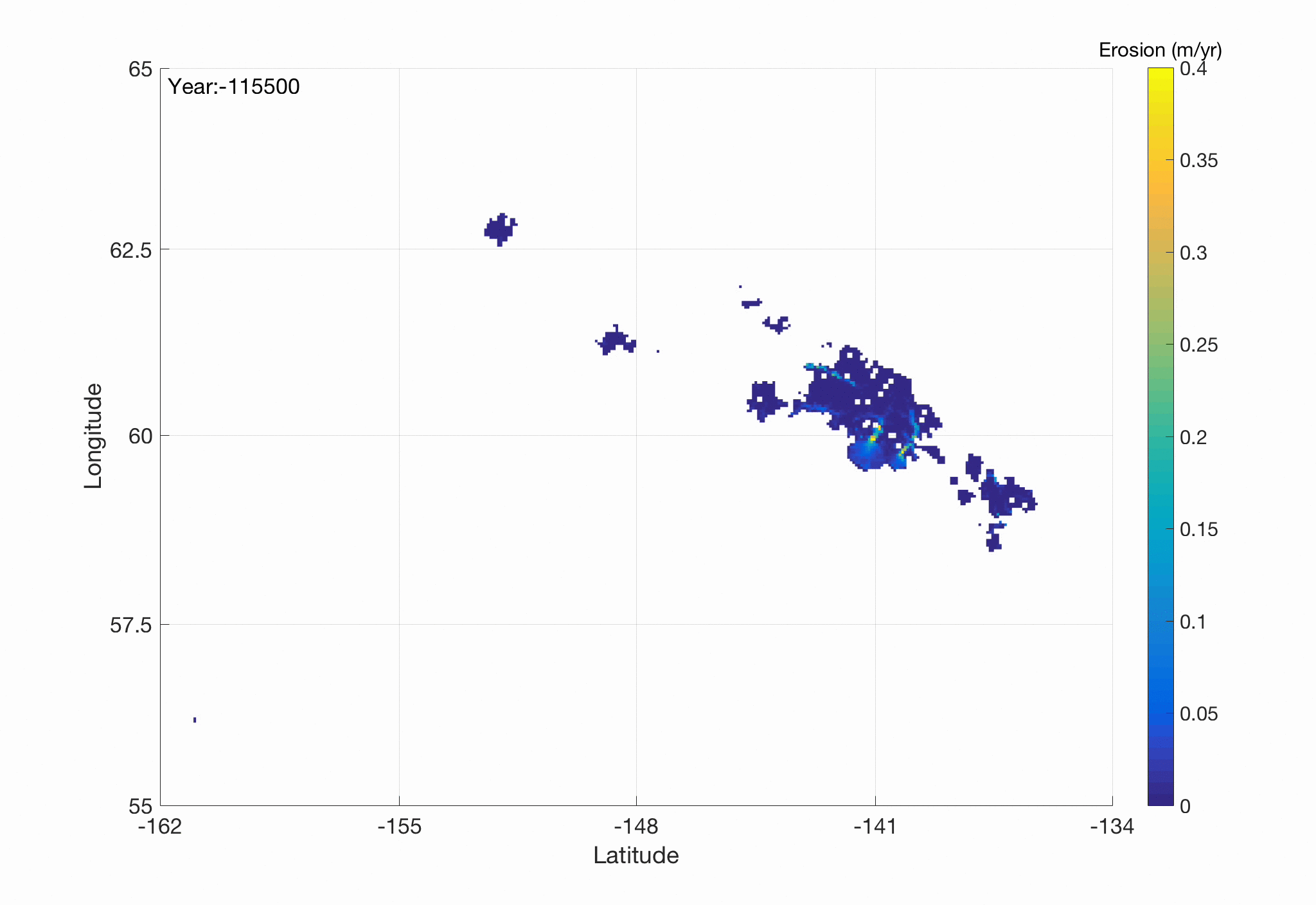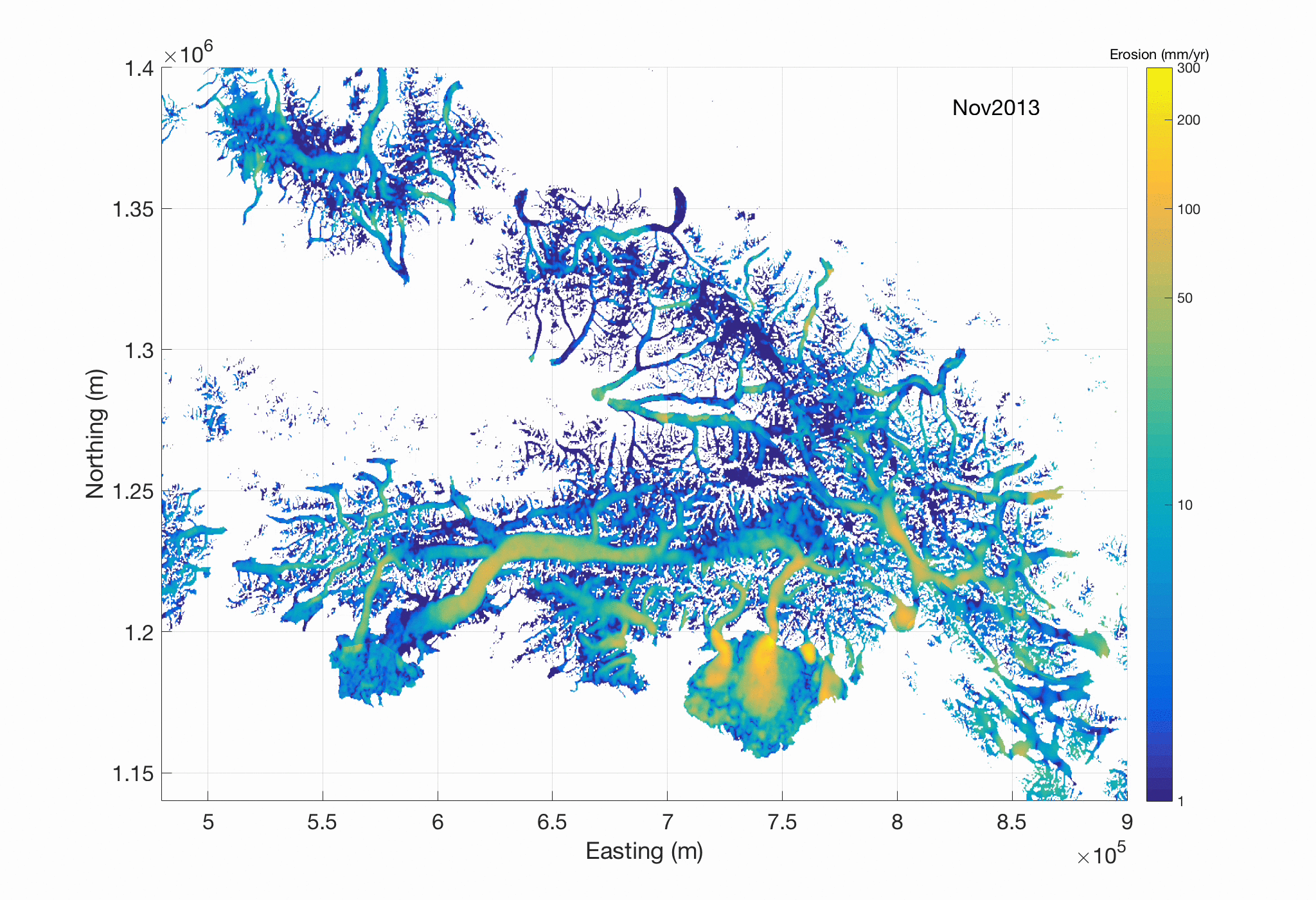Difference between revisions of "Geodynamics Course Projects"
(→2018 Geodynamics Course Projects) |
(→2018 Geodynamics Course Projects) |
||
| Line 18: | Line 18: | ||
[[File:Erosion_modern.gif|800px]] | [[File:Erosion_modern.gif|800px]] | ||
| + | |||
| + | |||
| + | <pdf>File:NesbittGeodynamicsFinal.pdf</pdf> | ||
== References == | == References == | ||
Revision as of 22:25, 19 February 2019
Past Geodynamics Course Projects
2018 Geodynamics Course Projects
Modeling Glacial erosion using ice velocity and rock strength in Coastal Alaska
Will Kochtitzky and Ian Nesbitt
This project uses a very basic, very generalized, "fudge factored" rock cohesion classification to estimate erosion in coastal Alaska at present and throughout the last 115,000 years. Modeled velocity and ice extent data provided graciously by Annie Boucher are part of the University of Maine Ice Sheet Model (UMISM).
Seen here is a an estimate of glacial erosion based on the velocity-driven erosion model of Humphrey and Raymond (1994) since 115 thousand years before present.
Below, the same model applied to a modern velocity dataset (Altena et al., in review) which uses a finer resolution.
References
- Altena, B., Scambos, T., Fahnestock, M., & Kääb, A. (2018). Extracting recent short-term glacier velocity evolution over Southern Alaska from a large collection of Landsat data. The Cryosphere Discussions, (May), 1–27. https://doi.org/10.5194/tc-2018-66
- Humphrey, N. F., & Raymond, C. F. (1994). Hydrology, erosion and sediment production in a surging glacier: Variegated Glacier, Alaska, 1982–83. Journal of Glaciology, 40(136), 539–552. https://doi.org/10.3189/S0022143000012429

